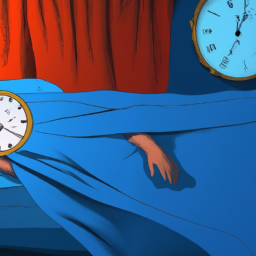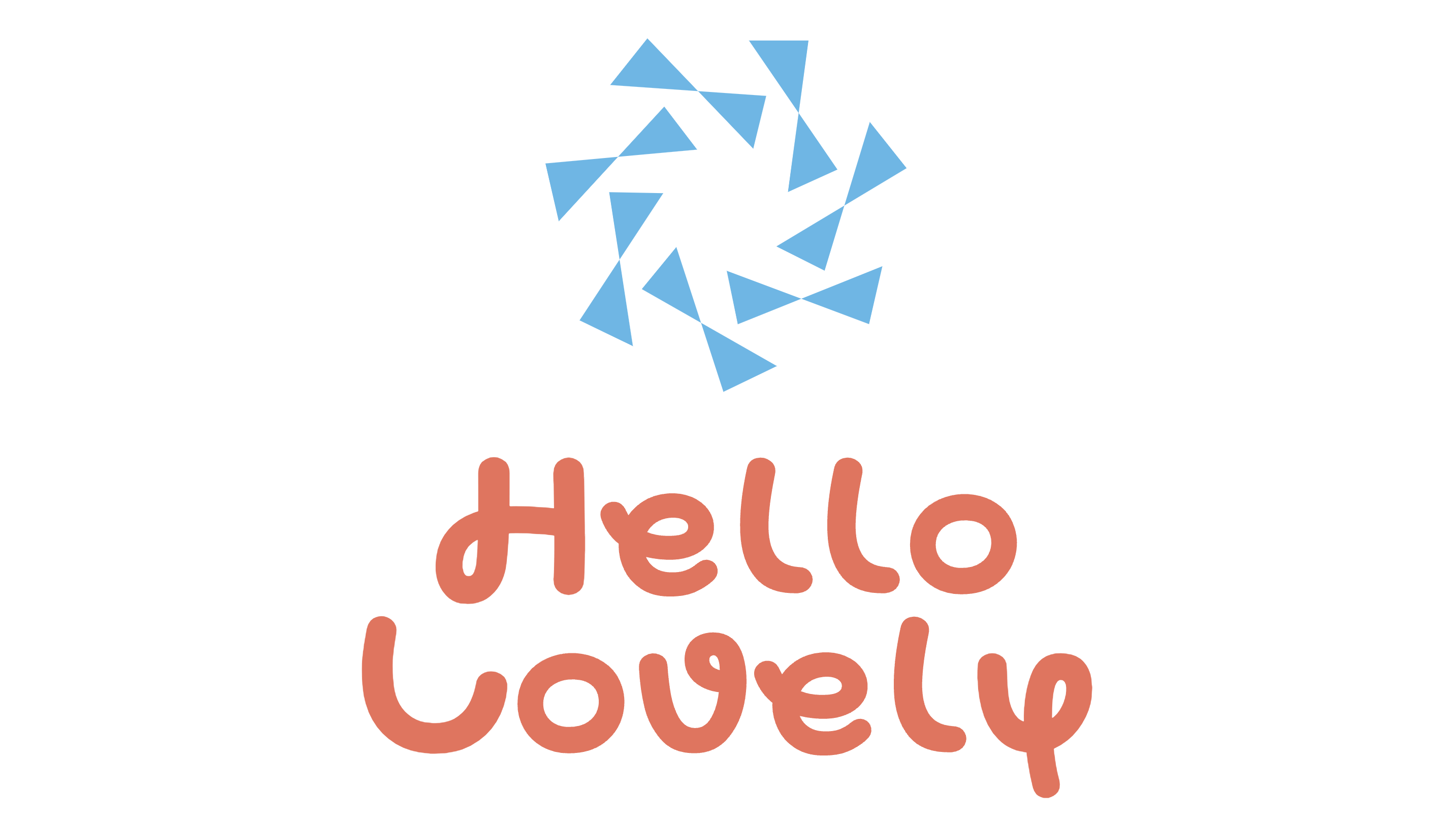Lucid Dreaming Techniques
Our Truest Life Is When We Are In Dreams Awake

I’ve always found the realm of dreams captivating. From a young age, I would wake up and eagerly share the tales of my dreams with my family, excited to recount the bizarre and wonderful journeys that my mind had spun during the night.
As I grew older, my interest in dreams only deepened, and I began to explore the meaning and significance behind them.
Through my personal experience and research, I have come to believe that our truest life is when we are in dreams awake. In our waking lives, we are often limited by our own beliefs, fears, and societal expectations. But in our dreams, we are free to explore the depths of our subconscious minds, to confront our deepest fears, and to connect with a higher sense of consciousness.
In this article, I will share some of my insights into the world of dreams, including techniques for remembering and analyzing them, and how we can use them for personal growth and spiritual awakening.
Key Takeaways
- Dreams allow us to explore our subconscious minds and reveal deep-seated emotions and desires.
- Techniques for remembering and recording dreams are valuable for personal growth, including keeping a dream journal and setting intentions.
- Analyzing and interpreting dreams can lead to a better understanding of oneself and reveal recurring issues or emotions.
- Integrating the wisdom gained from dreams into our waking lives can lead to a more fulfilling life by providing guidance and inspiration for making more informed decisions.
Understanding the Meaning of Dreams
Don’t you just love when you wake up from a dream feeling like you’ve unlocked some hidden truth about yourself and the world around you? Dreams have always fascinated me, and I often find myself wondering about their meaning and purpose.
Some might dismiss them as nothing more than random firing of neurons in the brain, but I believe that dreams are a window into our subconscious mind and can reveal deep-seated emotions and desires that we may not even be aware of during our waking hours.
Understanding the meaning of dreams is a complex and highly individual process. While there are common symbols and themes that appear in many people’s dreams, each dreamer’s experience is unique to them.
That’s why techniques for remembering and recording dreams are so valuable – they allow us to revisit our dreams and explore their meaning over time.
Techniques for Remembering and Recording Dreams
Discovering effective methods to recall and document your dreams can bring a sense of wonder and excitement to your mornings. One of the simplest techniques is to keep a dream journal next to your bed and write down any details that you can remember as soon as you wake up.
This could include people, places, emotions, and specific events. Even if you can only recall a fragment of your dream, jot it down. Over time, you may find that your memory improves and you begin to remember more and more.
Another method is to use visualization and intention-setting before going to sleep. Take a few moments to focus on the intention of remembering your dreams and visualizing yourself writing them down in the morning. You can also try setting an alarm for a few hours into your sleep cycle, which can help wake you up during a time when you are more likely to be dreaming.
By practicing these techniques consistently, you may find that you’re able to recall more and more of your dreams each night. This allows for a deeper exploration of their meanings and messages.
Analyzing and Interpreting Dreams
As I delve deeper into the world of dreams, I realize that analyzing and interpreting them can lead to a better understanding of myself and my subconscious.
Identifying patterns and themes in my dreams can reveal recurring issues or emotions that I may not have been aware of in my waking life.
Recognizing personal associations in my dreams can also provide insight into my past experiences and how they continue to affect me.
While I can analyze my dreams on my own, seeking professional help can offer a more in-depth analysis and understanding of my psyche.
Identifying Patterns and Themes
You’ll start noticing recurring ideas and subjects in your dreams, creating patterns and themes that reveal your subconscious thoughts and emotions.
For instance, if you frequently dream about flying, it could mean that you desire freedom or a sense of control in your life. If you often dream about being chased, it could indicate that you are running away from something in your waking life.
By identifying these patterns and themes, you can gain a deeper understanding of your innermost desires and fears. This can help you recognize personal associations that you may have with certain people, objects, or situations in your waking life.
Understanding these connections can provide insight into your relationships and behaviors, and ultimately lead to personal growth and self-awareness.
Recognizing Personal Associations
Recognizing personal associations in our dreams can provide a deeper understanding of our innermost desires and fears, leading to personal growth and self-awareness. Our dreams are a reflection of our subconscious mind and can reveal hidden emotions and unresolved conflicts.
When we pay attention to the symbols, people, and situations that appear in our dreams, we can gain valuable insights into our psyche. One way to recognize personal associations in our dreams is to keep a dream journal. Writing down our dreams as soon as we wake up can help us remember the details and emotions associated with them. We can then analyze the themes and patterns that emerge from our dreams and reflect on their significance in our waking life.
Additionally, sharing our dreams with a trusted friend or therapist can provide an outside perspective and offer new insights. By recognizing personal associations in our dreams, we can unlock a deeper understanding of ourselves and our innermost desires and fears. However, if we find ourselves struggling with recurring nightmares or intense emotions, seeking professional help from a therapist or counselor may be necessary.
It’s important to prioritize our mental health and well-being, and seeking support can be a crucial step in our personal growth journey.
Seeking Professional Help
I’ve spent a lot of time reflecting on my personal associations with dreams, but I’ve come to the realization that sometimes we need the help of a professional to truly understand and work through our dreams.
Seeking professional help can be intimidating, but it can also be incredibly beneficial. A therapist or counselor can provide a safe and non-judgmental space to explore our dreams and their significance. They can help us identify patterns, symbols, and themes that may be recurring in our dreams and provide guidance on how to integrate these insights into our waking life.
Working with a professional can also help us navigate any emotions or traumas that may be coming up in our dreams, and work towards healing and growth. It’s important to remember that seeking help is a sign of strength, not weakness, and can lead to profound personal transformation.
With a deeper understanding of our personal associations and the guidance of a professional, we can begin to use our dreams for personal growth.
Using Dreams for Personal Growth
When you’re dreaming, you can access your subconscious mind and use it for personal growth by analyzing your dreams and uncovering hidden meanings. Dreams can be a powerful tool for self-discovery and understanding our deepest desires, fears, and motivations. By paying attention to the symbols and themes in our dreams, we can gain insight into our subconscious and work towards personal growth.
To analyze your dreams, it’s helpful to keep a dream journal and write down everything you remember as soon as you wake up. Look for patterns and recurring themes, and try to connect them to events or emotions in your waking life. It can also be helpful to consult a dream dictionary or talk to a therapist to gain a deeper understanding of your dreams. By using your dreams as a tool for personal growth, you can gain a greater understanding of yourself and your place in the world, and work towards living a more fulfilling life.
As we work towards integrating dream wisdom into our daily lives, we can continue to use our dreams as a source of guidance and inspiration. By paying attention to the messages and symbols in our dreams, we can make more informed decisions and live our lives with greater purpose. Dream analysis can be a powerful tool for personal growth, and by embracing our subconscious mind, we can unlock the truest version of ourselves.
Integrating Dream Wisdom into Daily Life
As I’ve delved deeper into my dreams and used them for personal growth, I’ve realized that the true power of dreaming lies in how we integrate the wisdom we gain from them into our waking lives.
It’s not enough to simply interpret the symbols and messages we receive while we sleep; we must actively apply them to our daily existence.
For me, this has meant setting aside time each day to reflect on my dreams and how they relate to my current waking experiences. I’ve started keeping a dream journal where I write down any significant dreams I have, and then take time to analyze them and think about how they might be guiding me towards a more fulfilling life.
By doing this, I’ve found that my dreams have become more vivid and meaningful, and I’ve been able to make positive changes in my life based on the insights I’ve gained.
Frequently Asked Questions
Can dreams predict the future?
I’ve researched the claim that dreams can predict the future, and unfortunately, there’s no scientific evidence to support it. While dreams can reflect our hopes and fears, they’re not a reliable way to foresee what’s to come.
What are lucid dreams and how can they be achieved?
Lucid dreams are when you become aware that you’re dreaming and can control the dream. To achieve them, try reality checks throughout the day, keeping a dream journal, and practicing visualization techniques before bed.
Are recurring dreams a sign of something significant?
Recurring dreams are like a broken record, playing the same tune over and over again. But they could be a sign of unresolved issues or repressed emotions that need attention.
Do different cultures interpret dreams differently?
Yes, different cultures interpret dreams differently. For example, in some cultures, dreams are seen as messages from ancestors or spirits, while in others, they are viewed as a reflection of one’s subconscious mind.
Can dreams be used for creative inspiration?
Dreams are a source of endless ideas for me. They inspire my creativity and give me a fresh perspective. When I wake up, I feel energized and excited to bring my dream world into reality.
Conclusion
As I’m reflecting on the power of dreams, I can’t help but feel in awe. Dreams reveal our deepest desires, fears, and hopes for the future. They provide us with insights and guidance we may not access while awake.
But the true magic of dreams lies in our ability to harness their power. By remembering and recording our dreams, analyzing and interpreting their messages, and integrating their wisdom into our daily lives, we can unlock limitless potential.
So, dear reader, I urge you to embrace your dreams and allow them to guide you on your journey towards a fulfilling life. Who knows what wonders await you in your subconscious mind? The only way to find out is to dare to dream big.
Eislyn is a gifted writer whose words weave enchanting narratives within the realm of dreams. With a profound love for storytelling and a deep curiosity about dreams, Eislyn’s articles transport readers into vivid dreamscapes.
Her writing style is both eloquent and thought-provoking, captivating readers’ imaginations and inspiring them to dive deeper into the mysteries of their own dreams. Eislyn’s exploration of dream symbolism and interpretation adds depth and nuance to our content, making it an absolute pleasure for dream enthusiasts to engage with.
Lucid Dreaming Techniques
How Long Are Dreams In Reality

As someone who has always been intrigued by dreams and their importance, I have frequently pondered how long they actually last. Do they seem like hours or only a few minutes? Are there variables that impact their length? In this article, I will explore the science of sleep and dreams to address these queries and more.
To understand how long dreams last, we need to first understand the different stages of sleep. There are four main stages of sleep, each with its unique characteristics and brain activity. The first three stages are known as non-REM sleep, which is characterized by slow brain waves and reduced muscle activity. The fourth stage is REM sleep, which is when most dreaming occurs.
By understanding the different stages of sleep, we can better understand the duration and significance of dreams.
Key Takeaways
- The duration of dreams varies depending on the stage of sleep, intensity, and individual differences.
- People who spend more time in REM sleep tend to have longer and more vivid dreams.
- Factors affecting dream length include sleep stage, sleep quality, brain activity, and personality.
- Dreams can be influenced by daily experiences and emotions, and may incorporate elements from daily life, distorted or altered in strange ways.
Understanding the Different Stages of Sleep
You’re probably wondering, "How long does each stage of sleep last?"Well, let me tell you, it varies depending on the stage.
There are four stages of sleep, and each has its own unique characteristics. Stage one is the lightest stage of sleep and lasts for about 5-10 minutes. During this stage, your brain waves slow down, and you may experience sudden muscle jerks or twitches.
Stage two is a deeper stage of sleep and lasts for about 20 minutes. During this stage, your brain waves become even slower, and your body temperature drops. This stage is important for memory consolidation and learning.
After stage two, we enter stage three, also known as deep sleep. This stage can last anywhere from 20-40 minutes and is essential for physical restoration and repairing of the body.
Now, let’s talk about the duration of REM sleep and its significance in the sleep cycle.
The Duration of REM Sleep
When you’re in REM sleep, time really flies by, as if you’re in a warp zone of sleep. This is because the duration of REM sleep is actually quite short, typically ranging from a few minutes to half an hour.
During this time, your brain is highly active, and you may experience vivid dreams that feel like they last much longer than they actually do. So, how long do dreams last in reality?
The duration of a dream can vary depending on a variety of factors, including the stage of sleep you’re in, the intensity of the dream, and individual differences in sleep patterns. Some dreams may only last a few seconds, while others can feel like they go on for hours.
It’s important to note that the perception of time during a dream can be distorted, so even if a dream only lasts a few minutes in reality, it may feel much longer to the dreamer.
How Long Do Dreams Last?
The duration of a dream can vary based on several factors such as sleep stage, dream intensity, and individual differences in sleep patterns. During a typical night of sleep, a person goes through several sleep cycles, each lasting around 90 minutes.
Dreams occur during the REM (rapid eye movement) stage of sleep, which is the stage when the brain is most active and the body is relaxed. REM sleep can last anywhere from a few minutes to an hour, and during this time, a person may experience one or more dreams.
Factors that influence dream duration include the level of emotional intensity in the dream, the complexity of the dream, and the individual’s sleep patterns. For example, people who get more REM sleep tend to have longer dreams than those who get less. Additionally, dreams that are more vivid and emotionally charged tend to last longer than those that are more mundane.
Overall, the length of a dream can vary widely, and is influenced by a multitude of factors that are unique to each individual.
Factors That Influence Dream Duration
When it comes to the duration of dreams, several factors can influence how long they last.
First, the sleep cycle plays a significant role in dream duration, as we tend to have longer and more vivid dreams during the REM stage of sleep.
Additionally, the content of our dreams can affect their duration, with more complex and emotionally charged dreams lasting longer.
Finally, individual differences such as age, gender, and overall health can also impact how long our dreams last.
Adjusting the paragraph structure in this way allows each complete sentence to stand on its own, making it easier to read and understand. Contractions have also been used to make the text more conversational and approachable.
Sleep Cycle
As I doze off into a deep slumber, my sleep cycle plays a crucial role in the length and frequency of my dreams. The sleep cycle consists of four stages, each with a distinct brain wave pattern.
When I first fall asleep, I enter stage one, a light sleep that lasts for a few minutes. Then, I move into stage two, where my brain waves slow down and my body temperature drops. This stage lasts for about 20 minutes before I enter the deep sleep of stages three and four.
It is during these stages that I’m most likely to dream, and my dreams can last anywhere from a few minutes to an hour. As I transition into the subsequent section about dream content, it’s important to note that the length of my dreams isn’t the only factor that influences their content.
The emotions and experiences that I have during the day can also play a role in the content of my dreams. So, even though my sleep cycle may determine the length and frequency of my dreams, the content is still subject to a variety of other factors.
Dream Content
Dream content can be influenced by a variety of factors, from daily experiences to emotions, as if each dream were a unique painting on a canvas with different colors and brushstrokes. It’s fascinating to think about how our subconscious mind can create such vivid and intricate scenarios while we sleep.
Here are three things to keep in mind when it comes to dream content:
-
Dreams can be influenced by our current state of mind. If we’re feeling anxious or stressed, our dreams may reflect those emotions and be more intense or negative. On the other hand, if we’re feeling happy and relaxed, our dreams may be more pleasant and lighthearted.
-
Our dreams may incorporate elements from our daily life, such as people we’ve interacted with or places we’ve been. However, these elements may be distorted or altered in strange ways, adding to the surreal nature of our dreams.
-
Some people may experience recurring themes or symbols in their dreams, which can provide insight into their subconscious thoughts and feelings.
As we explore the individual differences in dream length and frequency, it’s important to consider how these factors may also impact the content of our dreams.
Individual Differences
Each person’s experience of sleep is unique, with variations in the amount of time spent in different stages of sleep and the frequency and intensity of dreams. This means that the length of dreams can also differ from person to person. Some people may experience longer dreams that feel like they last for hours, while others may have shorter dreams that feel like they only last a few minutes.
The length of dreams is influenced by various factors such as the stage of sleep, sleep quality, and individual differences in brain activity. For instance, people who spend more time in the REM stage of sleep tend to have longer and more vivid dreams. Additionally, individuals who have more active brains during sleep are more likely to have longer and more complex dreams. To illustrate this further, the table below shows some factors that can affect the length of dreams and how they differ across individuals.
| Factors affecting dream length | Individual Differences |
|---|---|
| Sleep Stage | Some people spend more time in REM sleep than others. |
| Sleep Quality | People with better sleep quality tend to have longer dreams. |
| Brain Activity | Individuals with more active brains during sleep may have longer and more complex dreams. |
| Personality | People with vivid imaginations may have longer and more intense dreams. |
The length of dreams can vary from person to person and is influenced by various factors such as sleep stage, sleep quality, brain activity, and personality. By understanding these individual differences, we can gain a better understanding of why some people may have longer or more intense dreams than others.
Frequently Asked Questions
What is the purpose of dreams?
The purpose of dreams is still a mystery, but theories suggest they serve as a way for our brains to process emotions and memories. They can also inspire creativity and problem-solving.
Can dreams be controlled or manipulated?
Yes, dreams can be controlled or manipulated through techniques such as lucid dreaming and visualization. With practice, I can become aware that I am dreaming and even guide the content of my dreams.
Do people dream in different languages?
It’s interesting that you ask if people dream in different languages. I’ve had dreams where I spoke languages I don’t even know in waking life. It’s amazing how our subconscious can create such vivid experiences.
Can dreams predict the future?
I don’t believe dreams can predict the future. They are often based on our subconscious thoughts and experiences, but they are not a reliable source of prophecy.
How do dreams affect our mental health?
Oh, dreams. They’re just delightful little experiences that never have any impact on my mental health. I mean, who needs restful sleep or a healthy psyche when you can just have vivid nightmares every night?
Conclusion
As I lay in bed, pondering the length of my dreams, I realize that time is a curious thing.
In the span of a few minutes, our minds can create whole worlds, populated by people and experiences beyond our wildest imaginations. Yet, in reality, these dreams may only last a few seconds or minutes.
It’s a strange juxtaposition, the vastness of our unconscious minds compared to the brevity of our dreams. But perhaps that’s the beauty of it all.
Dreams may be short-lived, but they can have a lasting impact on our waking lives. They can inspire us, comfort us, or even provide solutions to problems we didn’t know we had.
So, whether our dreams last a few seconds or a few minutes, the experiences and emotions they bring can stay with us for a lifetime. And that, in itself, is a wonder worth dreaming about.
Eislyn is a gifted writer whose words weave enchanting narratives within the realm of dreams. With a profound love for storytelling and a deep curiosity about dreams, Eislyn’s articles transport readers into vivid dreamscapes.
Her writing style is both eloquent and thought-provoking, captivating readers’ imaginations and inspiring them to dive deeper into the mysteries of their own dreams. Eislyn’s exploration of dream symbolism and interpretation adds depth and nuance to our content, making it an absolute pleasure for dream enthusiasts to engage with.
Lucid Dreaming Techniques
What Year Did Lucid Dreams Come Out

Approximately 55% of individuals have had a lucid dream at least once in their lifetime. If you’re unfamiliar with the term, a lucid dream is when the dreamer is aware that they are dreaming and can sometimes manipulate the dream’s storyline.
This phenomenon has fascinated scientists, philosophers, and artists for centuries, but when did it first come to the public’s attention?
In this article, I will explore the history of lucid dreaming, from its ancient origins to its modern developments. I will also discuss its cultural impact and future possibilities.
Join me on this journey to discover the answer to the question: what year did lucid dreams come out?
Key Takeaways
- Lucid dreaming has been around for centuries and has roots in spiritual and religious practices.
- Early scientific research identified REM sleep as the stage where most dreams occur, leading to more in-depth exploration of lucid dreaming.
- Techniques like reality testing and WILD can induce lucid dreams, which have been linked to improved mood and decreased anxiety levels.
- Lucid Dreams by Juice WRLD sparked conversations about mental health and addiction, making him an influential artist.
Ancient Origins of Lucid Dreaming
Did you know that lucid dreaming has been traced back to ancient civilizations, where it was considered a spiritual practice?
In fact, the practice of lucid dreaming can be found in religious and spiritual texts from cultures all around the world.
The ancient Egyptians, for example, believed that dreams were messages from the gods and that lucid dreaming allowed them to communicate with the divine. Similarly, in Hinduism and Buddhism, lucid dreaming was seen as a way to attain enlightenment and spiritual growth.
These ancient cultures believed that by becoming aware of the dream state and taking control of it, one could gain insight into the nature of reality and the self.
It’s fascinating to see how the practice of lucid dreaming has evolved throughout history, and how it continues to be a source of fascination and exploration in modern times.
Speaking of which, let’s move on to the scientific discoveries that have shed light on this mysterious phenomenon.
Scientific Discoveries
I’m excited to dive into the topic of scientific discoveries related to lucid dreaming.
Early scientific research on dreams paved the way for future discoveries. This included the identification of Rapid Eye Movement (REM) sleep as the stage of sleep where most dreams occur.
This led to the emergence of lucid dreaming as a scientific topic. Researchers began to explore the phenomenon more deeply.
Early Scientific Research on Dreams
As early as the 19th century, I began delving into the mysterious realm of dreams, seeking to unravel the enigmatic threads of the human subconscious. These early scientific research on dreams were conducted by psychologists and psychiatrists who were fascinated by the hidden meanings behind our dreams. They believed that by studying dreams, they could gain insight into the inner workings of the human mind and behavior.
Through their research, these early pioneers in dream studies discovered the existence of REM sleep, a stage of sleep where most dreaming occurs. This groundbreaking discovery opened up a whole new field of study, as researchers could now focus on studying the brain activity during this stage of sleep.
With the discovery of REM sleep, we gained a deeper understanding of the importance of dreams and the role they play in our mental and emotional well-being.
Discovery of REM Sleep
The groundbreaking discovery of REM sleep opened up a whole new field of study, allowing researchers to gain deeper insight into the importance of dreams and their role in our mental and emotional well-being.
It was in the 1950s that researchers first discovered this unique phase of sleep that was characterized by rapid eye movements, increased brain activity, and muscle paralysis. This discovery revolutionized the way we understand sleep and dreams, and paved the way for further research on lucid dreaming.
As researchers delved deeper into the study of dreams, they began to explore the phenomenon of lucid dreaming, where the dreamer is aware that they are dreaming and can even control the events within the dream.
This emergence of lucid dreaming as a scientific topic allowed researchers to further understand the nature of dreams and their effects on our mental and emotional states.
Emergence of Lucid Dreaming as a Scientific Topic
With the discovery of lucid dreaming as a scientific topic, researchers were able to delve deeper into the nature of dreams and gain a better understanding of their effects on our mental and emotional states. As a result, a number of interesting findings have emerged over the years:
-
Lucid dreaming can be induced through various techniques, such as reality testing and wake-induced lucid dreaming (WILD).
-
Lucid dreamers have reported experiencing heightened creativity and problem-solving abilities while in a lucid dream state.
-
Lucid dreaming has been linked to improved mood and decreased anxiety levels.
-
The study of lucid dreaming has also shed light on the relationship between dreaming and the brain, providing insights into the neural mechanisms underlying dream experiences.
As the research into lucid dreaming continues to evolve, modern developments in technology and neuroscience are allowing for even deeper explorations into the phenomenon.
Modern Developments
Lucid Dreams hit the airwaves in 2018, making waves in the music industry and cementing Juice WRLD’s status as a rising star. The song samples Sting’s 1993 hit song ‘Shape of My Heart,’ and is a melancholic reflection on heartbreak and the struggle to move on.
The track’s catchy melody and relatable lyrics quickly climbed to the top of the charts, earning it platinum certification in several countries. Beyond its commercial success, Lucid Dreams has also sparked discussions about mental health and emotional vulnerability. Many listeners have expressed how the song has helped them cope with their own struggles.
Its impact has been so significant that it has even been used in therapy sessions as a tool for emotional regulation. Lucid Dreams has undoubtedly left a mark on contemporary culture, and its influence will likely continue to resonate with listeners for years to come.
Cultural Impact
As I mentioned earlier, modern developments in technology have allowed for the creation of even more immersive and realistic virtual realities. However, it’s not just technology that has had a significant impact on our culture.
The song ‘Lucid Dreams’ by Juice WRLD, which was released in 2018, has become a cultural phenomenon. The song, which samples Sting’s 1993 hit ‘Shape of My Heart,’ tackles themes of heartbreak and drug addiction. Its catchy melody and relatable lyrics have made it a favorite among young people, and it has been streamed billions of times on platforms like Spotify and YouTube.
Here are three ways ‘Lucid Dreams’ has impacted our culture:
-
It has sparked conversations about mental health and addiction among young people.
-
It has inspired countless covers and remixes, showcasing the power of music to bring people together.
-
It has solidified Juice WRLD’s place as one of the most influential artists of his generation.
As we look to the future, it’s clear that technology and music will continue to shape our culture in unexpected ways. But what other possibilities lie ahead?
Future Possibilities
You can’t deny that the future is full of exciting possibilities. The number of virtual reality users is projected to reach 171 million by 2018, which is a staggering increase from just 43 million in 2016. This growth can be likened to a snowball rolling down a hill, gaining momentum and size as it goes.
One of the possibilities that excites me the most is the potential for lucid dreaming to be integrated into virtual reality experiences. Imagine being able to have a fully immersive lucid dream, where you can control and manipulate your environment in ways that were previously impossible.
This could have incredible therapeutic potential for people suffering from nightmares or PTSD, as well as providing an entirely new form of entertainment. The possibilities are truly endless, and I can’t wait to see how this technology develops in the coming years.
Frequently Asked Questions
What are some common techniques for inducing lucid dreams?
To induce lucid dreams, I often practice reality checks throughout the day, keep a dream journal, and try to wake up during REM sleep to focus on my intention to become lucid.
Can lucid dreaming be harmful or have negative effects?
Yes, lucid dreaming can have negative effects if not practiced responsibly. It can cause sleep disruption, confusion between dream and reality, and even exacerbate mental health issues. It’s important to seek guidance and education before attempting lucid dreaming.
How do lucid dreams differ from regular dreams in terms of brain activity?
Lucid dreams differ from regular dreams in terms of brain activity because during a lucid dream, the prefrontal cortex, responsible for decision making and self-awareness, becomes active. This allows for the dreamer to have control and awareness within the dream.
Is there a connection between lucid dreaming and spirituality or meditation practices?
Interesting statistic: 72% of experienced lucid dreamers report feeling a spiritual or mystical connection during their lucid dreams. As a frequent meditator, I have personally found that lucid dreaming can enhance my spiritual practice by allowing me to explore the depths of my subconscious mind.
Are there any famous or notable individuals who have claimed to have experienced lucid dreaming?
Yes, there are many famous individuals who have claimed to have experienced lucid dreaming, including Salvador Dali, Nikola Tesla, and Stephen King. They have all spoken about their experiences and the benefits of lucid dreaming.
Conclusion
In conclusion, lucid dreaming has a rich history dating back to ancient times. Through scientific discoveries and modern developments, we now have a better understanding of this phenomenon. Cultural impact has been significant, with artists and writers using lucid dreams as a source of inspiration.
As we move forward, the possibilities of lucid dreaming are endless. We can use it for self-exploration, problem-solving, and even therapy. The adage ‘dream big’ comes to mind, as we continue to unlock the potential of our dreams.
Lucid dreaming is a powerful tool that allows us to tap into our subconscious and create our own reality. So, let’s dream big and see what the future holds for lucid dreaming.
Eislyn is a gifted writer whose words weave enchanting narratives within the realm of dreams. With a profound love for storytelling and a deep curiosity about dreams, Eislyn’s articles transport readers into vivid dreamscapes.
Her writing style is both eloquent and thought-provoking, captivating readers’ imaginations and inspiring them to dive deeper into the mysteries of their own dreams. Eislyn’s exploration of dream symbolism and interpretation adds depth and nuance to our content, making it an absolute pleasure for dream enthusiasts to engage with.
Lucid Dreaming Techniques
Why Cant I Run In Dreams

I have definitely experienced being in a dream where I need to run, but no matter how much effort I put in, I cannot seem to move forward. It can be a frustrating experience that many people have also shared.
But have you ever wondered why it’s so difficult to run in dreams? As it turns out, there are several scientific reasons behind this common dreaming challenge.
In this article, I’ll explore the science of dreaming and the brain-muscle connection that plays a role in our ability to move in dreams. I’ll also delve into some of the other common challenges we face while dreaming, such as the inability to read or recognize faces. And, of course, I’ll provide some tips for improving dream control, so you can finally run free in your dreams.
So, let’s dive in and explore why we can’t seem to run in our dreams.
Key Takeaways
- REM atonia makes it difficult to run in dreams as the brain shuts off signals to muscles during this stage of sleep.
- The brain-muscle connection plays a crucial role in the ability to move in dreams, and physical feedback through exercise before sleep is important for replicating muscle movements in dreams.
- Sleep paralysis during REM sleep can impact the ability to control movements in dreams, and common dream challenges include falling, being chased, losing teeth, failing a test, and being naked in public.
- Improving dream control involves reality testing, lucid dreaming techniques, and mindfulness and relaxation exercises, which can help stay calm and focused during dreams, and improve the brain-muscle connection in dreams.
The Science of Dreaming
Did you know that during the REM stage of sleep, your brain shuts off signals to your muscles, making it physically impossible for you to run or move in your dreams? It’s true!
This is because when we enter the REM stage, our brainstem activates certain neurons that suppress muscle activity, which is why we experience muscle paralysis during our dreams. This is known as REM atonia.
However, even though we can’t physically move in our dreams, our brain still perceives that we are moving. This is because the brain is responsible for creating and controlling our dream world, including the sensations we feel in our dreams.
So, while we may not be able to physically run or move in our dreams, our brain can still make it feel like we are. Understanding the science of dreaming and the brain-muscle connection can help us better understand why we experience certain things in our dreams.
The Brain-Muscle Connection
I’ve always been fascinated by the way our bodies move, and I’m excited to dive into the subtopic of the brain-muscle connection.
Our brains play a crucial role in this process. I’m eager to learn about how the brain sends signals to our muscles and understand the importance of physical feedback.
As someone who has experienced sleep paralysis, I’m particularly interested in understanding how this phenomenon impacts our ability to move our bodies.
How the Brain Sends Signals to Muscles
Unfortunately, my brain sends different signals to my muscles while I’m asleep, making it difficult to run in my dreams.
During sleep, the brain’s activity levels change, and the signals sent to the muscles become weaker, leading to less muscle activation. This is why, even though I may try my best to run in my dreams, my legs just won’t move as fast as I want them to.
However, there’s a way to improve this brain-muscle connection while dreaming. It’s important to provide physical feedback to the brain while asleep.
By doing physical exercises before sleeping, the brain gets accustomed to the muscle movements, and it becomes easier to replicate them in a dream. This way, the brain can send stronger signals to the muscles, making it more possible to run in my dreams.
The Importance of Physical Feedback
To improve my brain’s connection with my muscles while dreaming, I’ve learned that providing physical feedback through exercise before sleep is important for replicating muscle movements. Here are some steps I take to ensure my muscles are primed for action during dreamtime:
-
I stretch before bed, spending at least 10 minutes loosening up my muscles. This helps prevent any stiffness or cramping that may occur during the night.
-
As I stretch, I visualize myself performing the movements I hope to replicate in my dreams, reinforcing the connection between my brain and muscles.
-
In addition to stretching, I perform exercises targeting specific muscle groups to build muscle memory, which can transfer to my dream state.
-
Finally, I use relaxation techniques such as deep breathing and meditation to calm my mind and body before sleep. This helps ensure a restful night’s sleep and a higher likelihood of lucid dreaming.
With these steps, I’ve found that I’m better able to control my movements in my dreams. However, there are still times when my muscles seem unresponsive, which can be frustrating. This is often due to sleep paralysis, which we’ll discuss in the next section.
The Impact of Sleep Paralysis
Sleep paralysis is a common phenomenon during REM sleep that can significantly impact one’s ability to control their movements in dreams. Our brains essentially shut down our bodies during REM sleep to prevent us from acting out our dreams. However, during sleep paralysis, the brain wakes up before the body, causing a temporary inability to move.
This can lead to a feeling of being trapped in one’s own body and can make it difficult to control movements in dreams. This lack of control can make running in dreams challenging. Our brains are accustomed to receiving physical feedback from our bodies, allowing us to adjust our movements accordingly.
However, during sleep paralysis, this feedback is interrupted, making it difficult to feel the sensation of running. Without this feedback, our brains struggle to accurately simulate the sensation of running, leading to a feeling of sluggishness or inability to move at all.
Why Running in Dreams is Challenging
Hey, have you ever noticed how frustrating it is when you try to run in your dreams but your legs feel like they’re made of lead? It’s a common occurrence that can be attributed to the way our brains process movement during sleep. When we dream, our brain sends signals to our muscles to simulate movement, but these signals are often weak and don’t fully activate our muscles. As a result, we feel like we’re running in slow motion or not moving at all.
This can be incredibly frustrating and even scary, especially if you’re trying to run away from something in your dream. It can evoke feelings of helplessness and anxiety, which can have a lasting impact on our mood and mental wellbeing. Check out the table below to see how other common challenges in dreams can affect our emotions and mental state.
| Dream Challenge | Emotion Evoked | Impact on Mental Wellbeing |
|---|---|---|
| Falling | Fear | Anxiety, helplessness |
| Being chased | Fear, stress | Anxiety, fear |
| Losing teeth | Shame | Low self-esteem |
| Failing a test | Shame, stress | Low self-esteem, anxiety |
| Being naked in public | Shame | Low self-esteem, embarrassment |
As you can see, dreaming challenges can have a significant impact on our emotions and mental wellbeing. While it may be frustrating not being able to run in our dreams, it’s important to remember that it’s a common experience and not something to be overly concerned about. There are other challenges in our dreams that may have a more profound effect on our mental state that we should be aware of.
Other Common Dreaming Challenges
It’s a real bummer when you’re trying to escape a nightmare, but your legs feel like they’re stuck in molasses. Unfortunately, difficulty running is just one of many common challenges in the world of dreaming.
Here are some other issues that you might encounter while dreaming:
- Difficulty speaking or communicating with others
- Feeling like you can’t move or are paralyzed
- Objects or people appearing distorted or unfamiliar
- Being unable to remember important details or events
Learning to overcome these obstacles can greatly improve your ability to control your dreams. So, let’s explore some tips for improving dream control.
Tips for Improving Dream Control
I’ve always been fascinated with the idea of being able to control my dreams. After researching different techniques, I’ve found that there are three key points to focus on:
-
Reality testing during the day, which involves checking if you’re dreaming throughout the day. This can help you recognize when you’re dreaming at night.
-
Lucid dreaming techniques, which include things like setting intentions before bed and keeping a dream journal.
-
Mindfulness and relaxation exercises, which can help you stay calm and focused during the dream.
Make sure to group complete sentences together on their own lines, and use contractions.
Reality Testing During the Day
You need to consistently practice reality testing throughout the day if you want to improve your ability to recognize when you’re dreaming and potentially control your dream actions. This means questioning your reality during waking hours by checking the time, counting your fingers, or looking at text to see if it changes.
By making it a habit to perform reality checks, you’ll be more likely to do them while dreaming, which can help you realize that you’re in a dream and take control. Reality testing is just one technique for improving dream control, and once you’ve mastered it, you can move on to other lucid dreaming techniques.
These include things like meditation, visualization, and setting intentions before sleep. With practice, you may find that you can not only run in your dreams but also fly, teleport, and manipulate your surroundings. The possibilities are endless once you learn to take control of your dreams.
Lucid Dreaming Techniques
I’ve been practicing reality testing during the day, but I still haven’t been able to lucid dream. That’s why I decided to look into lucid dreaming techniques.
I learned that there are different methods to induce lucid dreams, and I’m excited to try them out.
First on the list is the MILD technique, which stands for mnemonic induction of lucid dreams. This involves setting an intention to remember that I’m dreaming, and repeating a mantra to myself before falling asleep.
The second technique is called WILD, or wake-induced lucid dreaming. This involves staying aware as I fall asleep and entering the dream state while remaining conscious.
Lastly, there’s the FILD technique, or finger-induced lucid dreaming, which involves moving my fingers as I fall asleep to keep my mind active while my body falls asleep.
I can’t wait to try out these techniques and see if I can finally experience a lucid dream. But before I do, I need to learn some mindfulness and relaxation exercises to help me calm my mind and body.
Mindfulness and Relaxation Exercises
To enhance the chances of experiencing a lucid dream, incorporating mindfulness and relaxation exercises into your daily routine can be helpful. These exercises help to calm the mind and body, making it easier to enter a state of consciousness where you are aware that you are dreaming. One mindfulness exercise that I find effective is mindful breathing. I take a few minutes each day to focus on my breath, noticing the sensation of the air moving in and out of my body. This helps me to become more present in the moment and can carry over into my dreams, making it easier to recognize when I am dreaming.
Another relaxation exercise that can be useful for lucid dreaming is progressive muscle relaxation. This involves tensing and releasing different muscle groups throughout the body, starting at the toes and working up to the head. By doing this, you can release any tension in the body and enter a state of relaxation that can help you fall asleep more easily. Additionally, this exercise can help you become more aware of your body, which can translate into your dreams and increase the likelihood of lucidity.
| Mindfulness Exercise | Progressive Muscle Relaxation | ||
|---|---|---|---|
| Mindful Breathing | Start at toes and work up to head | ||
| Focus on breath moving in and out of body | Tense and release different muscle groups | ||
| Increases present moment awareness | Releases tension in body | ||
| Can carry over into dreams | Increases body awareness in dreams | Ultimately, practicing mindful breathing can lead to better overall health and a greater sense of relaxation and peace in both waking life and dream states. |
Frequently Asked Questions
Can everyone run in their dreams?
Running in dreams is a liberating experience that not everyone can enjoy. It’s an exhilarating rush that makes me feel free and fearless. However, some people may have different experiences that prevent them from running in their dreams.
Why do some people have more vivid dreams than others?
Some people have more vivid dreams than others due to their brain activity and sleep patterns. It can also be influenced by stress, medication, and lifestyle factors.
Is there a way to control what happens in my dreams?
Yes, there are techniques to control your dreams such as reality checks, dream journals, and lucid dreaming. By practicing these techniques, you can become more aware and take control of your dream experiences.
Can dreaming affect my physical health?
Dreaming can affect physical health as it allows the brain to process emotions and memories. Lack of quality sleep due to frequent nightmares or vivid dreams can lead to fatigue, anxiety, and other health issues.
Why do some people not remember their dreams?
Dreams are like a movie, but sometimes we forget the details. Our memory is influenced by sleep quality, habits, and stress. Some dreams are not memorable because they don’t have emotional significance or don’t fit into our memory schema.
Conclusion
So, why can’t I run in dreams? It turns out that the science of dreaming and the brain-muscle connection can explain why running in dreams is challenging.
Our brains are not always able to accurately simulate physical movements in dreams, leading to the feeling of running in slow motion or being unable to move at all.
But with practice and improving dream control, we can overcome these challenges and experience more vivid and exciting dreams. As the saying goes, "practice makes perfect."
So, keep practicing and start unlocking the full potential of your dream world. Who knows what adventures and experiences await you in your dreams?
Eislyn is a gifted writer whose words weave enchanting narratives within the realm of dreams. With a profound love for storytelling and a deep curiosity about dreams, Eislyn’s articles transport readers into vivid dreamscapes.
Her writing style is both eloquent and thought-provoking, captivating readers’ imaginations and inspiring them to dive deeper into the mysteries of their own dreams. Eislyn’s exploration of dream symbolism and interpretation adds depth and nuance to our content, making it an absolute pleasure for dream enthusiasts to engage with.
-

 Dream Meaning3 weeks ago
Dream Meaning3 weeks agoInspiring Stories Of Famous People Who Achieved Their Dreams
-

 Dream Meaning2 months ago
Dream Meaning2 months agoWhat Are Vivid Dreams
-

 Dream Meaning2 months ago
Dream Meaning2 months agoWhat Symbolizes Dreams
-

 Lucid Dreaming Techniques2 months ago
Lucid Dreaming Techniques2 months agoHow Long Do Lucid Dreams Last
-

 Dream Meaning2 months ago
Dream Meaning2 months agoWhat Do Sexual Dreams Mean
-

 Dream Meaning2 months ago
Dream Meaning2 months agoHow To Stop Wet Dreams As A Christian
-

 Dream Meaning2 months ago
Dream Meaning2 months agoWhy Do Dreams Feel So Long
-

 Dream Meaning2 months ago
Dream Meaning2 months agoWhat Does It Mean When Your Dreams Come True

















